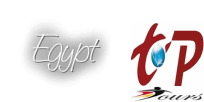Top Tours
Travel to Egypt Tours
Hieroglyphic Alphabet
The Hieroglyphic Alphabet
HIEROGLYPH
REPRESENTS
PRONOUNCED
HIEROGLYPH
REPRESENTS
PRONOUNCED
vulture
ah
(father)
---------------------------------
reed
i
(filled)
---------------------------------
two
reeds
y
(discovery)
---------------------------------
arm &
hand
broad a
(car)
---------------------------------
quail
chick
oo(too)
or
w (wet)
---------------------------------
foot
b
(boot)
---------------------------------
mat
p
(pedestal)
---------------------------------
horned
viper
f
(feel)
---------------------------------
owl
m
(moon)
---------------------------------
water
n
(noon)
---------------------------------
mouth
r
(right)
---------------------------------
reed shelter
h
(hat)
---------------------------------
twisted flax
h!
(ha!)
---------------------------------
placenta
kh
(like Scotch 'loch')
---------------------------------
animal's belly
ch
(like German 'ich')
---------------------------------
folded cloth
s
(saw)
---------------------------------
door bolt
s
(saw)
---------------------------------
pool
sh
(show)
---------------------------------
slope of hill
k
(key)
---------------------------------
basket
with handle
k
(basket)
---------------------------------
jar stand
g
(go)
---------------------------------
loaf
t
(tap)
---------------------------------
tethering rope
tj
(church)
---------------------------------
hand
d
(dog)
---------------------------------
snake
dj
(adjust)
---------------------------------
You may notice that some hieroglyphs are vowel sounds, these are considered weak consonants and are used when a word begins with a vowel or where it might be confusing without them, like in a name.
---------
The Egyptian numbering system was also based on units of 10, but instead of relying on the position of numbers to define their value, the Egyptians used different images to represent different units of 10.
To write a number, the hieroglyph representing each unit of ten would simply be drawn as many times as was necessary.
EXAMPLE
500, would be written:
HIEROGLYPH
REPRESENTS
PRONOUNCED
HIEROGLYPH
REPRESENTS
PRONOUNCED
vulture
ah
(father)
---------------------------------
reed
i
(filled)
---------------------------------
two
reeds
y
(discovery)
---------------------------------
arm &
hand
broad a
(car)
---------------------------------
quail
chick
oo(too)
or
w (wet)
---------------------------------
foot
b
(boot)
---------------------------------
mat
p
(pedestal)
---------------------------------
horned
viper
f
(feel)
---------------------------------
owl
m
(moon)
---------------------------------
water
n
(noon)
---------------------------------
mouth
r
(right)
---------------------------------
reed shelter
h
(hat)
---------------------------------
twisted flax
h!
(ha!)
---------------------------------
placenta
kh
(like Scotch 'loch')
---------------------------------
animal's belly
ch
(like German 'ich')
---------------------------------
folded cloth
s
(saw)
---------------------------------
door bolt
s
(saw)
---------------------------------
pool
sh
(show)
---------------------------------
slope of hill
k
(key)
---------------------------------
basket
with handle
k
(basket)
---------------------------------
jar stand
g
(go)
---------------------------------
loaf
t
(tap)
---------------------------------
tethering rope
tj
(church)
---------------------------------
hand
d
(dog)
---------------------------------
snake
dj
(adjust)
---------------------------------
You may notice that some hieroglyphs are vowel sounds, these are considered weak consonants and are used when a word begins with a vowel or where it might be confusing without them, like in a name.
---------
The Egyptian numbering system was also based on units of 10, but instead of relying on the position of numbers to define their value, the Egyptians used different images to represent different units of 10.
To write a number, the hieroglyph representing each unit of ten would simply be drawn as many times as was necessary.
EXAMPLE
500, would be written:


